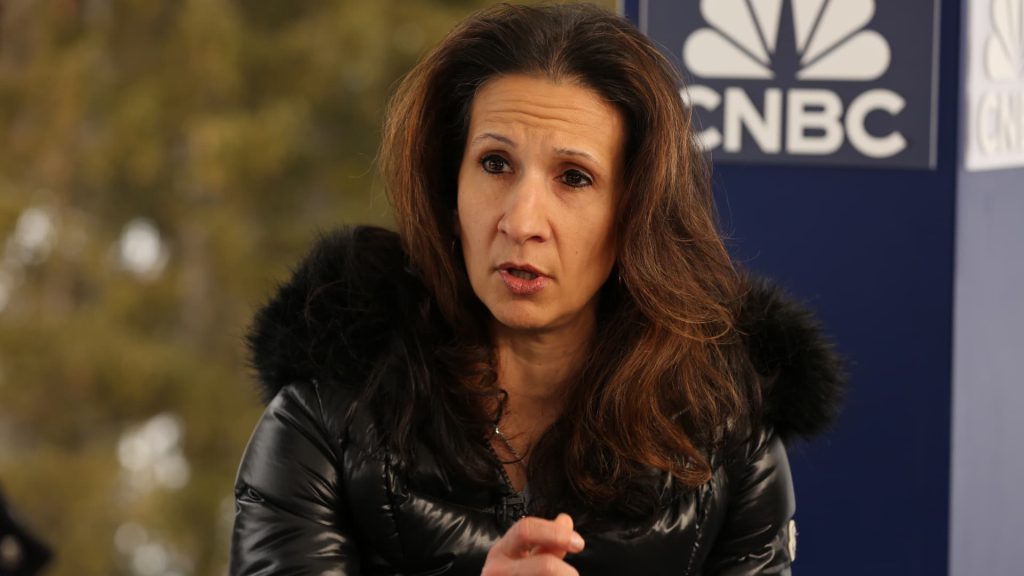In a recent address, Lynn Martin, President of the New York Stock Exchange (NYSE), discussed the resilience and operational excellence of U.S. financial markets amid recent global volatility. Speaking on CNBC during the World Economic Forum in Davos, Switzerland, Martin emphasized the historical strength of the NYSE, outlining how its advanced systems have effectively managed increased trading volumes and operational challenges. As the NYSE celebrates its 233rd anniversary, Martin reassured investors of the enduring stability offered by the exchange during these turbulent times.
| Article Subheadings |
|---|
| 1) A Historical Perspective on the NYSE |
| 2) Responding to Market Volatility |
| 3) Advancements in Trading Technology |
| 4) The Role of Risk Management |
| 5) Future Outlook for U.S. Markets |
A Historical Perspective on the NYSE
The New York Stock Exchange, founded in 1792 under a buttonwood tree by a group of twenty-four stockbrokers, has evolved into a cornerstone of the global financial market. Lynn Martin pointed out that despite the modernization of technology and trading practices, the core principles of market integrity and investor trust remain unchanged. The NYSE’s rich history has been characterized by major financial developments and crises, all of which have contributed to a robust operational framework.
Over the last two centuries, the NYSE has transformed from a chaotic trading floor to a sophisticated blend of human expertise and cutting-edge technology. This historical evolution reflects the adaptability of the exchange to meet the needs of its participants, a quality that Martin believes has been fundamental to its continued success.
Responding to Market Volatility
Recent weeks have tested the NYSE’s operational resilience as financial markets experienced significant fluctuations. In response to heightened market volatility, Martin stated that NYSE designated market makers engaged in manual control of the opening and closing auctions at more than double their usual rate. This proactive approach has allowed the exchange to efficiently manage trades during episodes of extreme market turbulence.
The ability to swiftly adapt to changing conditions is essential for maintaining investor confidence. The NYSE has reported a more than 20% increase in activity at its auctions, which, according to Martin, reflects the enhanced engagement from market participants seeking both stability and profit opportunities.
Advancements in Trading Technology
Technology has always played a crucial role in the evolution of trading practices at the NYSE. Martin highlighted that improvements made since the early days of trading have allowed the NYSE to handle unprecedented volumes of trade effectively. The exchange recently processed more than 1 trillion incoming orders on multiple occasions, with median processing times of about 30 microseconds—a significant achievement in the context of today’s fast-paced market environment.
The timing of trades has been expedited significantly; following the COVID-19 market sell-off, the industry has reduced the settlement duration from two days to one. Martin emphasized that such efficiencies contribute to reducing risks and increasing certainty for investors navigating turbulent market conditions.
The Role of Risk Management
Risk management is integral to the functioning of financial markets, and Lynn Martin reaffirmed the commitment of the NYSE to uphold the integrity of its market infrastructure. Citing the ongoing guidance from historical perspectives, the NYSE has continually fortified its operations through strategic investments in technology and innovation. This commitment is crucial for maintaining the trust of investors and the stability of the market.
As the financial landscape grows more complex, the NYSE’s established practices and continual evolution allow for better handling of risks associated with trading. Thereby, it serves to safeguard the fundamental interests of stakeholders across the spectrum.
Future Outlook for U.S. Markets
Looking ahead, Lynn Martin expressed optimism regarding the future of U.S. markets. The NYSE has solidified its reputation as the largest and most robust financial market in the world, thanks in large part to its proactive approach in learning from past experiences and preparing for future crises. This forward-thinking mindset is crucial for fostering confidence among investors and participants in the financial ecosystem.
Martin concluded with a powerful reminder of Henry Ford’s words about the importance of a reserve of knowledge and experience. As the NYSE continues to navigate volatile markets, it remains steadfast in its mission to provide a stable and reliable environment for trading, thereby upholding its historical legacy.
| No. | Key Points |
|---|---|
| 1 | The NYSE has adapted to recent market volatility by increasing manual control over trading auctions. |
| 2 | Recent weeks have seen a record number of transactions processed, exceeding 1 trillion orders in a single day. |
| 3 | Technological advancements have greatly reduced the time to settle trades, enhancing market efficiency. |
| 4 | The NYSE’s historical resilience is a key strength that informs its current operational practices. |
| 5 | The commitment to risk management remains paramount, ensuring a thorough protective framework for investors. |
Summary
As financial markets navigate turbulence, Lynn Martin and the NYSE exemplify resilience and adaptability. The exchange’s storied history, alongside its focus on technological innovation and risk management, continues to position it as a leader in the global financial landscape. With confidence in its systems and operational practices, the NYSE not only addresses current market challenges but also prepares for future uncertainties, reinforcing the strength of U.S. financial markets.
Frequently Asked Questions
Question: How does the NYSE manage trading volume during periods of volatility?
The NYSE implements manual control measures during critical trading periods, allowing designated market makers to oversee the opening and closing auctions more closely to ensure stability.
Question: What technology advancements have the NYSE adopted in recent years?
The NYSE has enhanced its systems to process trades with median times of around 30 microseconds while also shortening the trade settlement period from two days to one, increasing efficiency and reducing risk.
Question: Why is risk management critical for the NYSE?
Risk management is essential for maintaining investor confidence and market reliability. The NYSE’s longstanding practices and continuous technological investments help safeguard its market infrastructure against financial uncertainties.
